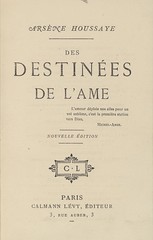
PREV ARTICLE
FULL ISSUE
PREV FULL ISSUE
HARVARD REMOVES BINDING OF HUMAN SKINWe've never come across a numismatic book thus bound, but for bibliophiles and followers of anthropodermic bibliopegy, here's the latest news on that Harvard University library book that may or may not have been bound in human skin. -Editor Of the roughly 20 million books in Harvard University's libraries, one has long exerted a unique dark fascination, not for its contents, but for the material it was reputedly bound in: human skin. For years, the volume — a 19th-century French treatise on the human soul — was brought out for show and tell, and sometimes, according to library lore, used to haze new employees. In 2014, the university drew jokey news coverage around the world with the announcement that it had used new technology to confirm that the binding was in fact human skin.
But on Wednesday, after years of criticism and debate, the university announced that it had removed the binding and would be exploring options for
The announcement came more than three years after the university announced a broad survey of the human remains across its collections, as part of the intensifying reckoning with the role of slavery and colonialism in establishing universities and museums. In a statement, Harvard's president at the time, Lawrence S. Bacow, apologized for the university's role in practices that A report released in 2022 identified more than 20,000 human remains in Harvard's collections, ranging from full skeletons to locks of hair, bone fragments and teeth. They included the remains of about 6,500 Native Americans, whose handling is governed by the 1990 Native American Graves Protection and Repatriation Act, as well as 19 from people of African descent who may have been enslaved.
To read the complete articles, see:
To read earlier E-Sylum articles, see:
Wayne Homren, Editor The Numismatic Bibliomania Society is a non-profit organization promoting numismatic literature. See our web site at coinbooks.org. To submit items for publication in The E-Sylum, write to the Editor at this address: whomren@gmail.com To subscribe go to: https://my.binhost.com/lists/listinfo/esylum All Rights Reserved. NBS Home Page Contact the NBS webmaster 
|

